Exploring the Dominican Republic
Sightseeing in a Caribbean nation
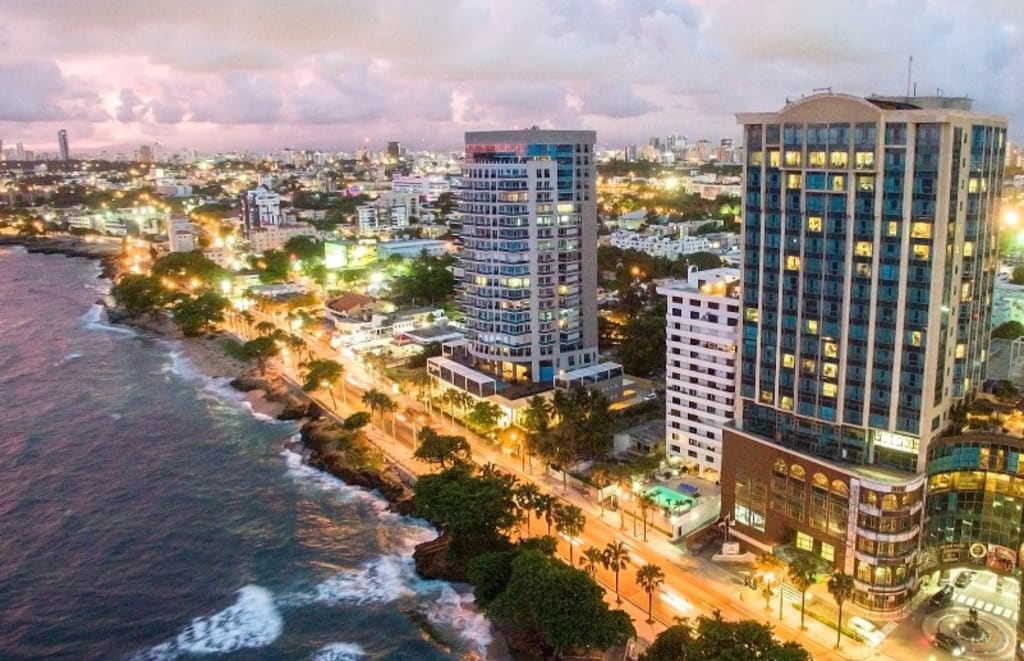
Sharing the island of Hispaniola with Haiti is the Caribbean nation of the Dominican Republic. It is known for its beaches, resorts and golfing. The nation is a mix of rainforest, savannah and highlands. The capital Santo Domingo is one of the Caribbean’s oldest cities.
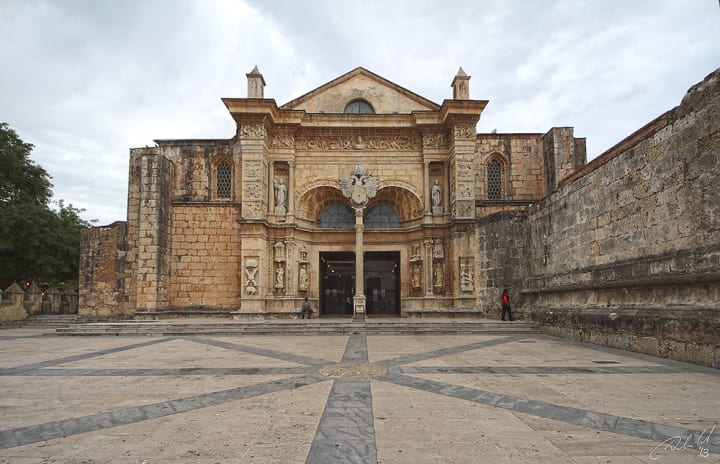
Catedral Primada de America the first stone of this cathedral was set in 1514 by Diego Columbus, who was the son of the great explorer. This is the oldest standing cathedral in the Western hemisphere. The vault of the church is Gothic, the arches Romanesque and the ornamentation Baroque. Among the more impressive features are the amazing vaulted ceiling and its 14 interior chapels. An audio guide is available in different languages.
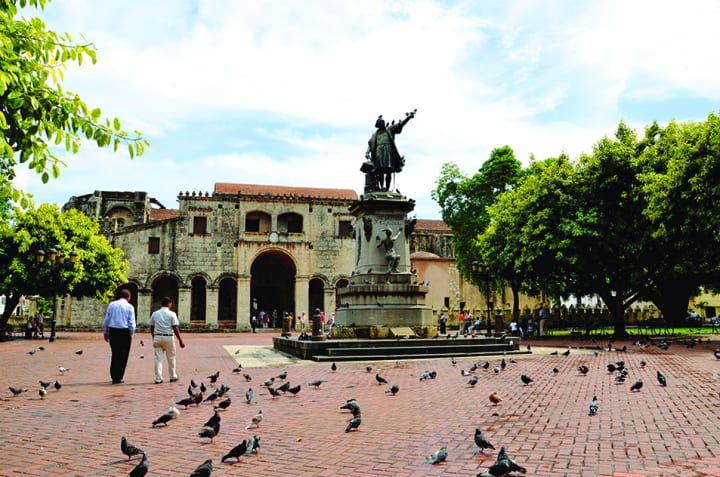
Parque Colon is a historic park next to the cathedral with several trees and a large statue of Admiral Columbus. Here you can people watch and see thousands of pigeons.
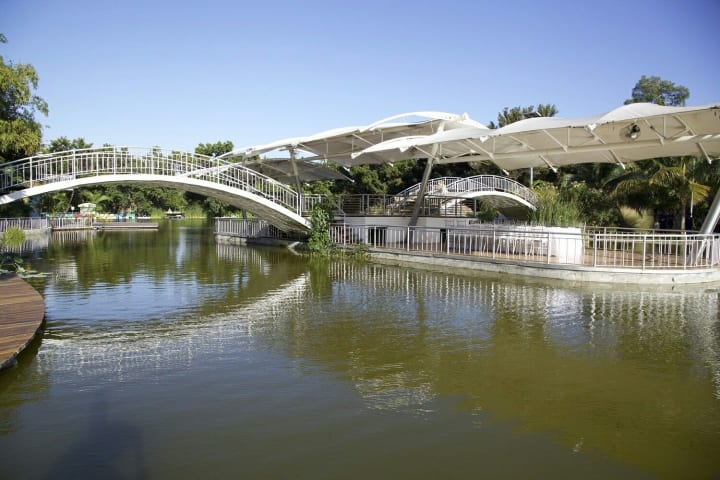
Parque Mirador del Sur sits on top of a huge limestone ridge and you can see a long tree-lined corridor. This park has many caves with some of them as large as airplane hangars. One of these caves has been made into a restaurant. There are many paths for walking and jogging. The eastern end of the park many people after work gather for free dance classes in Zumba fitness.
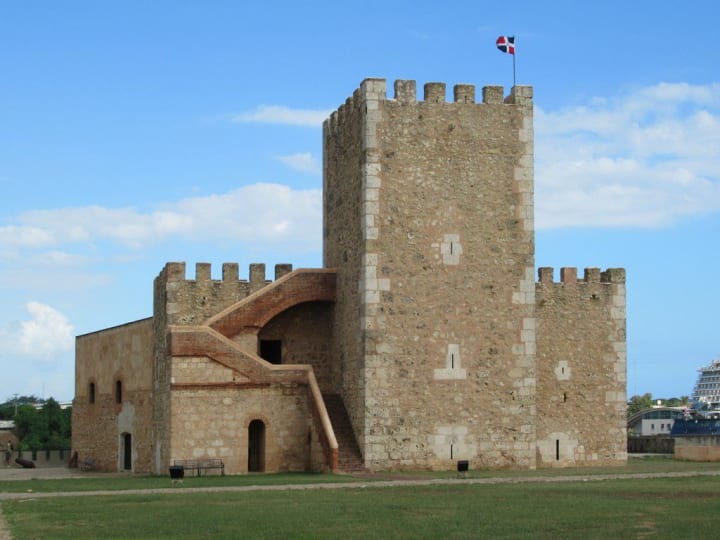
Fortaleza Ozama is the oldest colonial military edifice in the New World. It is located at the meeting of the Rio Ozama and the Caribbean. Over the centuries this fort served as a military garrison and prison and has flown the flag of many different countries. Public tours are available with multilingual guides. It is a UNESCO World Heritage site.
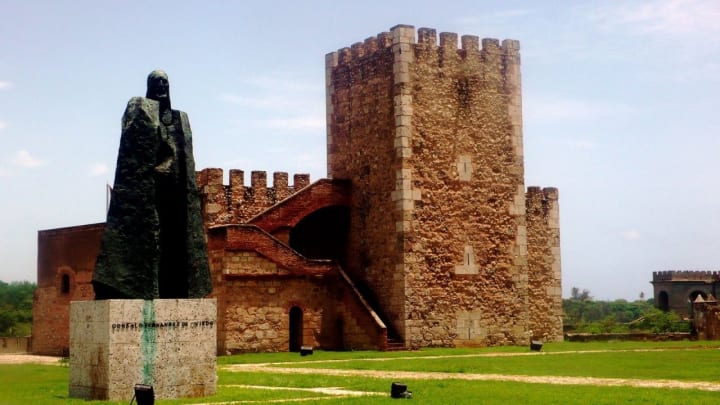
The oldest building is the Torre Del Homenaje or Tower of Homage. The walls are 2m-thick and contain many riflemen’s embrasures. The rooftop lookout offers 360-degree views of the city.
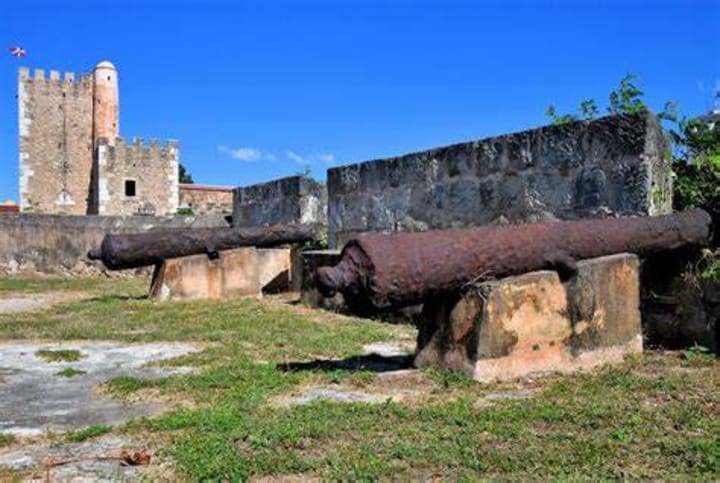
Along the fort’s riverside are two rows of cannons. These were the first lines of defense for the city’s port.
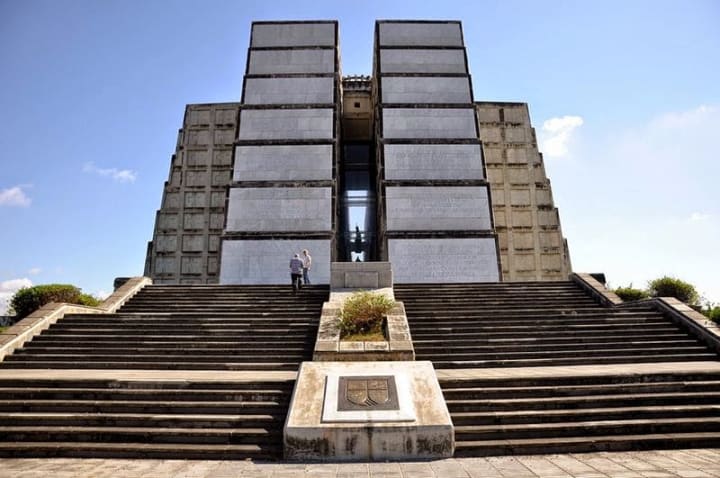
Faro a Colon is a massive monument located on the east side of the Rio Ozama. Its cement flanks stand 10 stories high and form the shape of a cross. At the intersection of the cross arms is a tomb that is guarded by white-uniformed soldiers and supposedly contains the remains of Columbus. Inside is a long series of exhibition halls that display documents related to the voyages of Columbus and the exploration and conquest of the Americas. There are displays with photos and artifacts from indigenous Latin American communities. High-power lights on the roof can project a white cross in the sky.
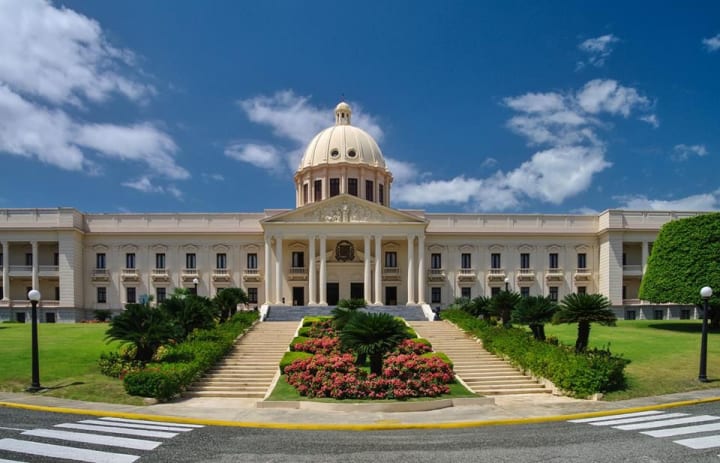
Palacio National is the Dominican seat of government. It was designed by Italian architect Guido D’Alessandro. The building was built of Samana roseate marble in a neo-Classical style. There is mahogany furniture, paintings from prominent Dominican artists, lovely gold inlaid mirrors and imported crystal. It is used as an executive and administrative office building. In the Room of the Caryatids you can see 44 sculpted draped women that rise like columns among French mirrors and Baccarat chandeliers. It is not regularly open to the public but tours can be had by appointment.
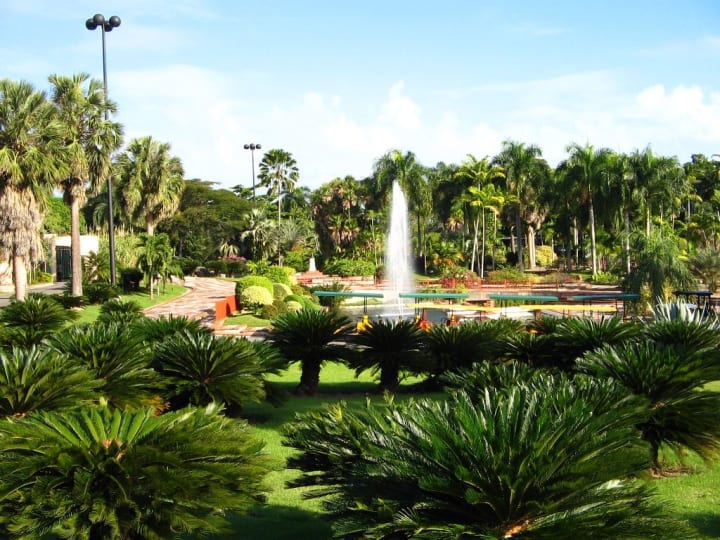
Jardin Botanico National offers aquatic plants, orchids, bromeliads, ferns, palm trees, a Japanese garden and so much more. Exhibits in the Ecological Museum explain the country’s ecosystems among them mangroves and could forests.
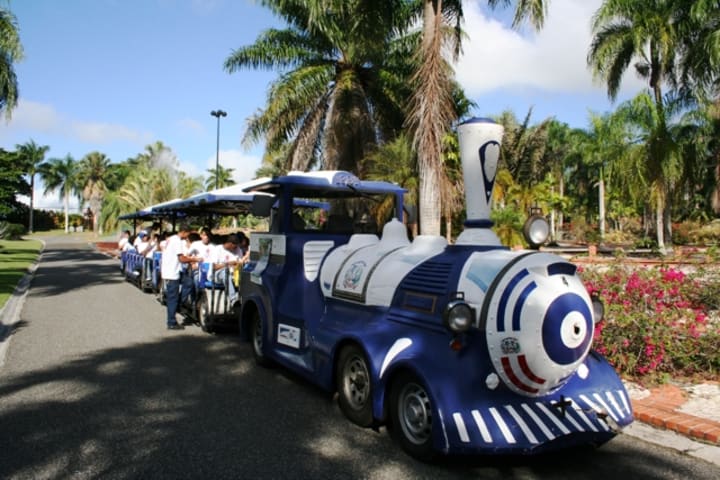
An open-air trolley takes visitors on a half-hour ride around the park. Many different events are hosted like an orchid exhibition and competition in March and a bonsai exhibition in April.

Museo de las Casas Reales was built in the Renaissance style during the 16th century. For a long time it was the seat of Spanish authority for the Caribbean region. Today it showcases colonial-period objects among them treasures that were recovered from sunken Spanish galleons. Rooms have period furnishings. On the walls you can find great maps of various voyages made by European explorers and conquistadors. There is an impressive antique weaponry collection on display. An audio guide is available in different languages including English.
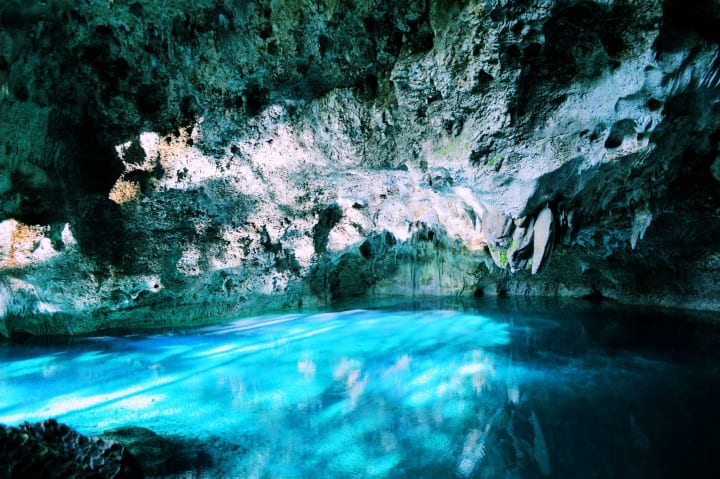
Los Tres Ojos consists of three humid caverns with dark blue lagoons that are connected by stalactite-filled passages. At the entrance a long stairway takes visitors down a narrow tunnel in the rock and a cement path leads through the caves. At the third ojo, visitors can hire a small boat to visit a fourth ojo, which is a lovely lake beneath open sky and filled with fish. Of interest is that on certain days a man who locals call “cave tarzan” accepts tips and then climbs the cave walls and plunges 20 ft. into the water. Visitors are not allowed to swim here.
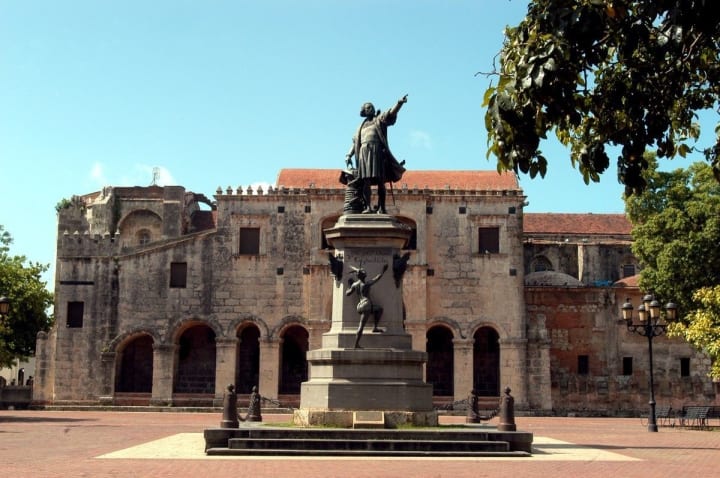
Plaza Espana is a large open area in front of the Alcazar de Colon. It was revamped in the 1990s in honore of the 500th anniversary of Christopher Columbus’ New World discovery.
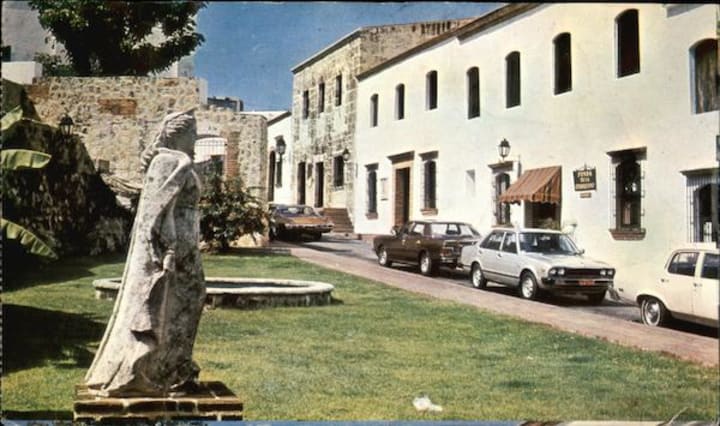
Along the northwest side is La Atarzana Street which is fronted by many restaurants housed in buildings that once served as warehouses in the 16th and 17th centuries.
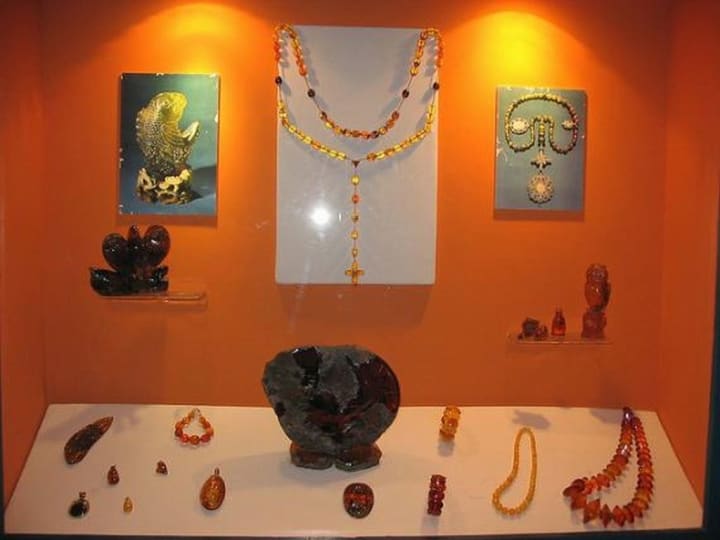
Amber World Museum features an impressive collection of amber from all around the world. The exhibits have information in both English and Spanish. They tell about the prehistoric origins of amber, Dominican mining processes and its present-day value to science and the world of art. You can purchase amber jewelry in the gift shop.
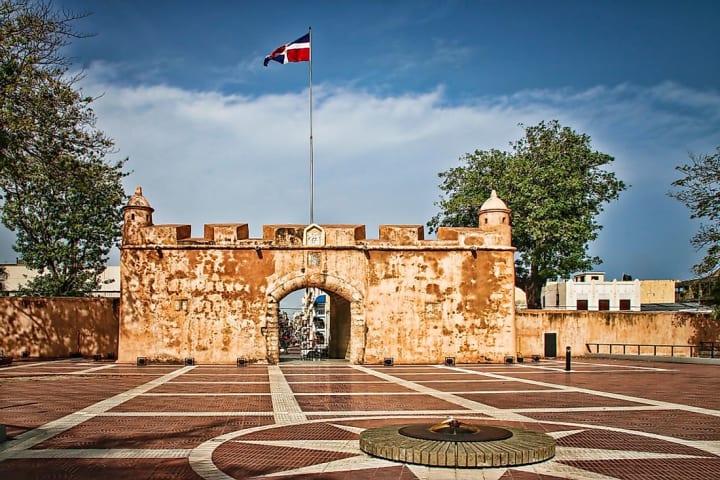
Puerta del Conde gate was named for the Count of Penalba, Bernardo de Meneses y Bracamonte, who succeeded in defending Santo Domingo against 13,000 invading British troops in 1655. Atop of the gate the first Dominican flag was raised. Inside Parque Independencia you’ll find the Altar de la Patria, a mausoleum, holding the remains of three national heroes – Juan Pablo Duarte, Francisco del Rosario Sanchez and Ramon Matias Mella.
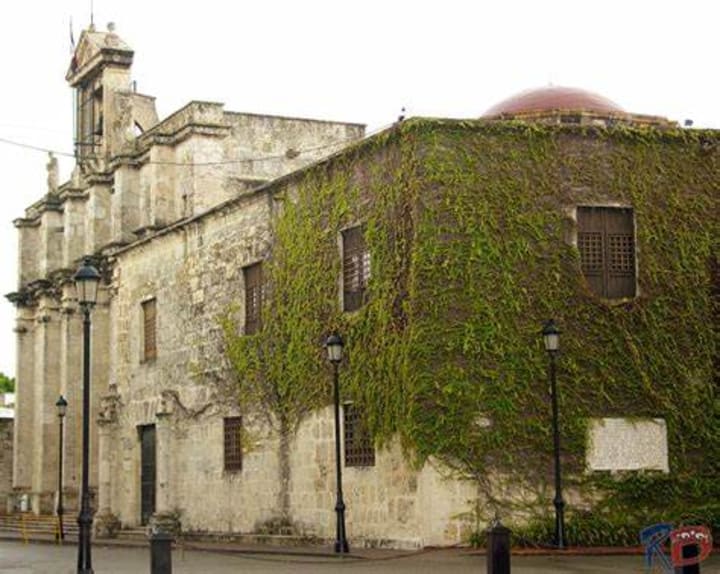
Panteon Nacional is a Jesuit church built in 1747 and is used as a mausoleum. Many of the country’s most illustrious persons are honored here, their remains sealed behind two marble walls. The building with its neo-Classical facade was constructed with large limestone blocks. There are armed soldiers at the entrance.
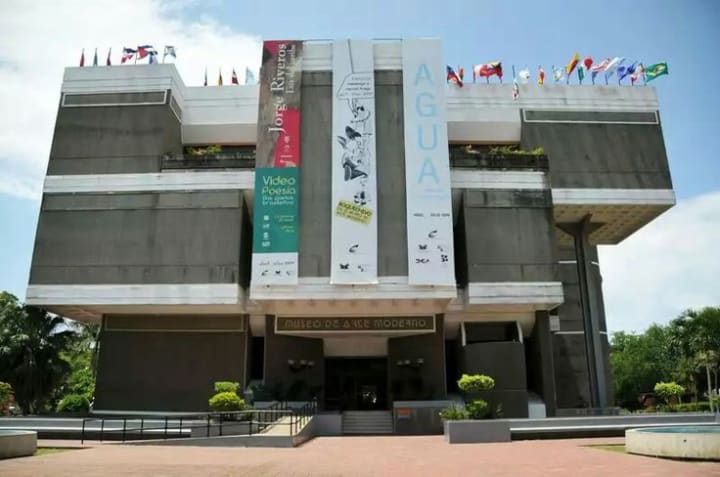
Museo de Arte Moderno the permanent collection includes paintings and a few sculptures by the Dominican Republic’s best-known modern artists. There are also temporary exhibits.
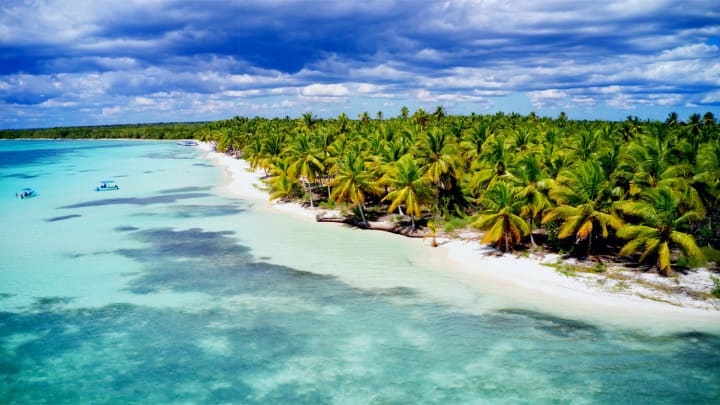
Exploring the Dominican Republic
Eastern National Park is a UNESCO World Heritage Site. Here visitors can see hundreds of species of plants and animals among them 112 species of birds. The reserve also includes one of the Caribbean’s largest marine parks with an immense coral reef system. There are four species of sea turtles as well as manatees, bottlenose dolphins and many different tropical fish.

The park is also the habitat of the rare paloma coronita or crowned or white-headed dove and the rhinoceros iguana. There is great diving and snorkeling. Visitors can see pre-Columbian art in the system of caves or can relax on some of the remote beaches.
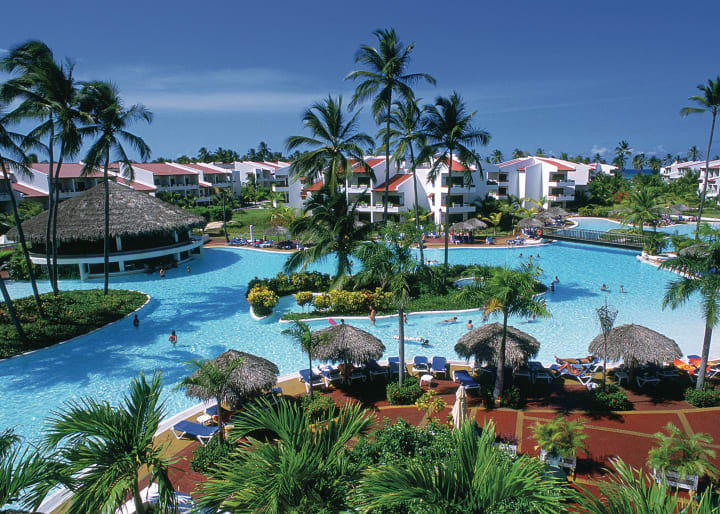
Punta Cana is one of the most popular tourist areas located on the eastern tip of the Dominican Republic. There are many resorts and lovely beaches. You can visit the fishing village of El Macao. Its public beach is a popular surfing spot.

On the southeast coast you’ll find La Romana. It is home to the lovely Altos de Chavon, a replica of a 16th century artisans’ village and one of the best places to shop for crafts. Visitors can stay at the luxurious Casa de Campo resort that includes several hotels, landscaped gardens, a riding school, a polo ground, and tennis courts. It also boasts of having one of the top golf courses in the Caribbean.
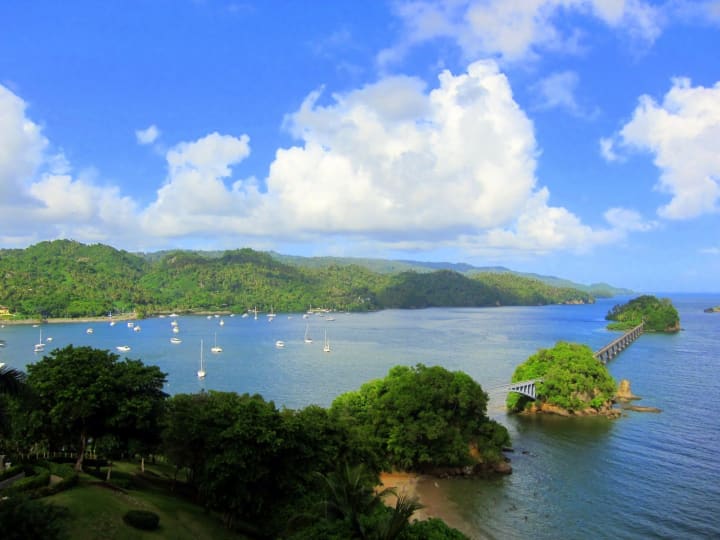
Samana Bay has many islets and palm-lined beaches. It is a haven for marine animals. During January and February you can see humpback whales that calve here.
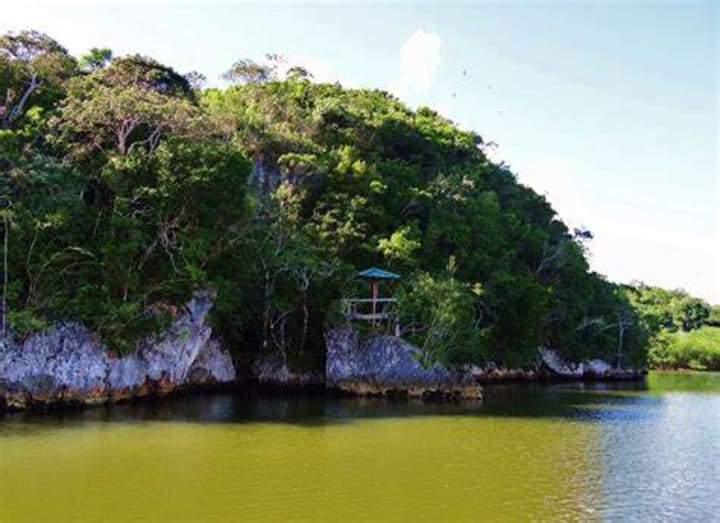
It includes Parque Nacional Los Haitises which is an ecological wonderland of jungle-covered islands and thick mangrove forests. There are unique rock formations emerging from the sea and bird-filled caves.
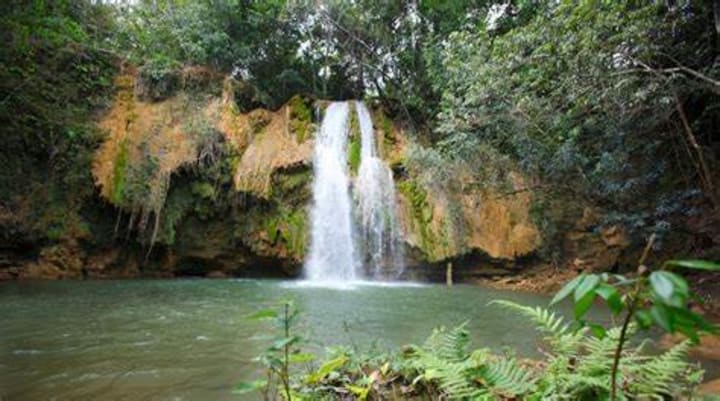
Of wonder, is the Salto El Limon Waterfall.
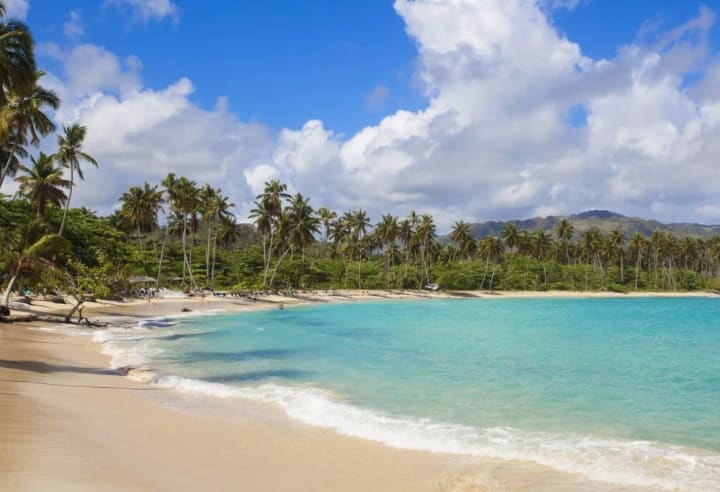
One of the most picturesque beaches in the country is Playa Rincon. Among the activities you can participate in here are horseback riding, hiking, biking and birding.
About the Creator
Rasma Raisters
My passions are writing and creating poetry. I write for several sites online and have four themed blogs on Wordpress. Please follow me on Twitter.
Enjoyed the story? Support the Creator.
Subscribe for free to receive all their stories in your feed. You could also pledge your support or give them a one-off tip, letting them know you appreciate their work.




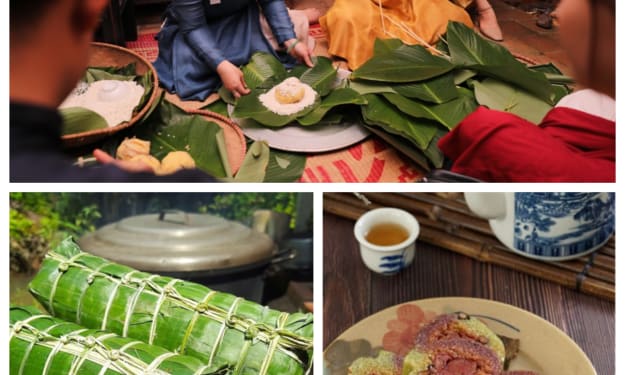

Comments
There are no comments for this story
Be the first to respond and start the conversation.